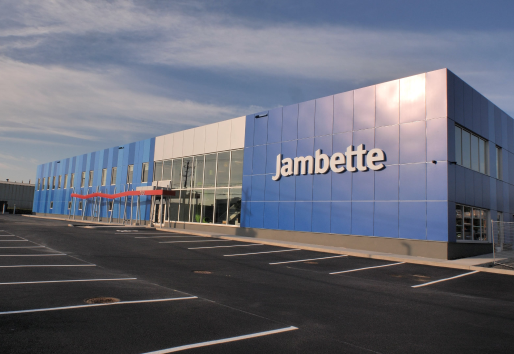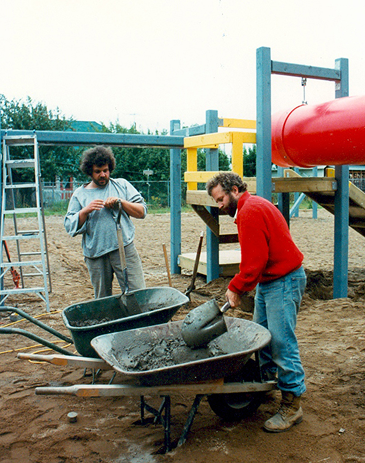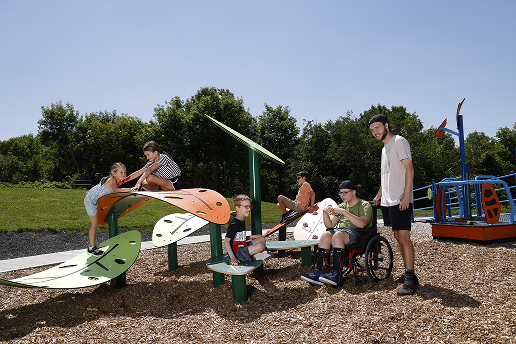Building Jambette one play structure at a time

Tenacity, creativity and daring. These are the ingredients to Jambette’s success. After a modest start, the Lévis business has become a leader in the outdoor play equipment sector in Canada.
Summary
|
Business: Jambette CED’s support over time has made it possible: to acquire and install equipment, production accessories and software; hire an external consultant specializing in production process optimization; and implement marketing strategies targeting the North American market. |
.png)
A success in so many ways
Thanks to its safe, fun and durable play structures, the business has posted continued growth in Canada and the U.S. To celebrate its 40th anniversary in style in 2023, it built a brand-new factory in Lévis.
Thanks to this building with modern equipment, the business plans to maximize its productivity, explore new markets and double its sales, which currently stand at $20 million, by 2029.
During all phases of its growth, Jambette has been able to increase its production capacity thanks, among other things, to the assistance of partners such as Canada Economic Development for Quebec Regions (CED), which has supported it five times, including to acquire strategic equipment.
“ CED has always stepped up to the plate when it came to helping us! The Agency has always shown a real interest in participating in our business’s development by listening very closely to our needs and being creative to adapt to our reality,” states Project Director and Co-founder Claude Caron.

co-founders of Jambette, do not hesitate to
put their shoulders to the wheel
to grow their business
A bit of history
The idea behind Jambette began to germinate in the summer of 1977, when Richard Boucher and Claude Caron, architectural technology graduates from Cégep Lévis-Lauzon, accepted the offer from one of their professors to draw a swing set for the Le Nord business.
Time passed and the two men pursued their careers. Richard continued to draw swing sets, but also play structures. Richard thus proposed to Claude that they relaunch the manufacture of outdoor play structures.
The idea continued along until June 1983, when the two friends founded Équipements RC, which would become Jambette. They manufactured a model of a wooden play structure that they installed in the Parc de la Paix in Lévis to gain visibility. During the launch phase, Guy, Claude’s brother and a recreation student at the Université du Québec à Trois-Rivières, joined the two to take over marketing and sales. The three associates then made a serious of wise decisions.
From wood to aluminum
In the early 1990s, Jambette traded wood in for aluminum, a durable, lightweight, affordable material that is easy to handle and install, giving the business a competitive advantage.
Another good choice: The business prioritized using a system of frames to install the play structures, which made it possible to avoid major excavation work in many cases and the use of heavy equipment that could damage the ground. Some play structures can even be relocated to another area or park.
Business decisions centred around children’s well-being

Children climb, hang, balance along, slide, crawl and rotate on the structures, in addition to socializing and imagining unforgettable adventures.
Aiming to prevent injuries among these budding explorers and acrobats, in 2000 Jambette became the first company in Canada to be certified by the International Play Equipment Manufacturers Association. This is the highest accreditation in the field of safe outdoor play areas for children in North America.
In 2011, the business began to manufacture its structures with round posts instead of using square models to help children develop their psychomotor skills and reworked its equipment based on this new design.
When asked to explain what is behind the growing demand for Jambette’s structures in the U.S., Claude Caron mentions the products’ distinctive character: “Our play structures have a new image for our neighbours to the south. Our designs are European in appearance, which is different and appreciated. Also, our French name Jambette inspires a certain exoticism. We are perceived as high-end.”
Collaborative management
Jambette is also at the cutting edge in human resources management with collaborative governance, without a hierarchy, placing staff at the centre of the mission to “build a world of play where dreams come to life.” Invested in this mission, employees have even participated in reflection exercises on the cities and parks of tomorrow with recreation, education, urbanism and artificial intelligence specialists.
Mr. Caron today measures how far they have come since 1983: “We reached each phase with a sustained rhythm. There was the launch of a craft business. It turned into a small industry andfinally became a structured manufacturer with 100 employees,” he beams.
An entrepreneurial success that can be attributed to two young architectural technologists who sketched, during a brief contract, what would become the seed of a flourishing SME.